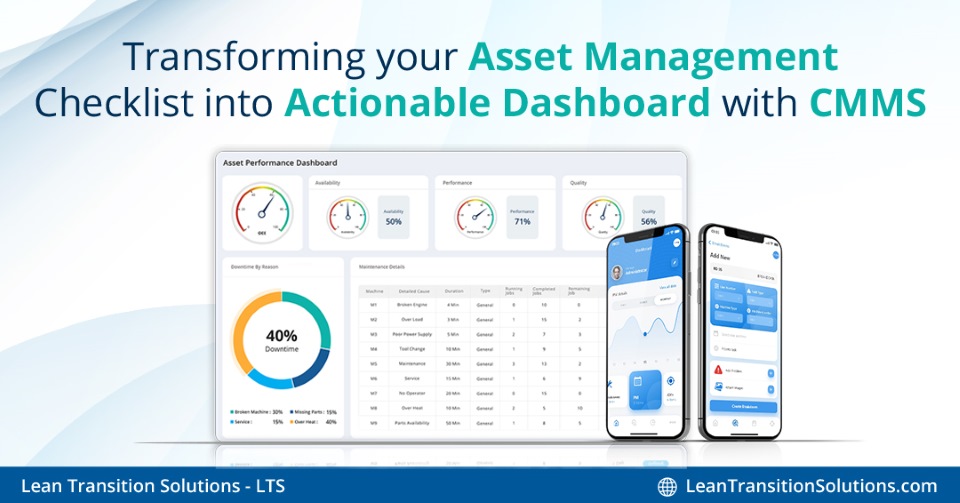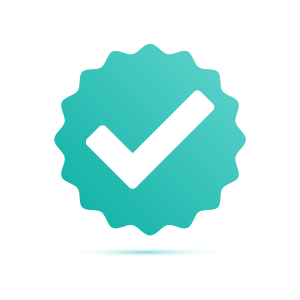Transforming your asset management checklist into actionable dashboard with CMMS
September 30, 2025
In the realm of asset management, organisations often rely on comprehensive checklists to monitor and maintain their equipment and facilities. While these checklists serve as foundational tools, their static nature can limit their effectiveness in dynamic operational environments. Integrating a Computerised Maintenance Management System (CMMS) can revolutionise these traditional checklists, transforming them into dynamic, actionable insights that drive efficiency and reliability.
The limitations of traditional asset management checklists
Traditional asset management checklists are typically static documents that outline maintenance tasks, inspection schedules, and compliance requirements. While they provide a structured approach to asset management, they often fall short in several areas:
- Manual updates:Keeping checklists current requires manual intervention, leading to potential oversights and errors.
- Lack of real-time data: Traditional checklists do not provide real-time insights into asset performance or condition.
- Limited analytical capability: Analysing trends or predicting failures is challenging without integrated data analytics.
CMMS: Bridging the gap between checklists and actionable insights
A CMMS serves as a centralised platform that automates and streamlines maintenance management processes. By digitising asset management checklists within a CMMS, organisations can overcome the inherent limitations of traditional methods. Key functionalities include:
- Automated scheduling: CMMS enables automated scheduling of preventive maintenance tasks, ensuring timely interventions and reducing the likelihood of equipment failure.
- Real-time monitoring: Integration with IoT devices allows for real-time monitoring of asset conditions, facilitating predictive maintenance strategies.
- Data-driven decision making: CMMS collects and analyses data on asset performance, providing actionable insights that inform maintenance strategies and resource allocation.
Asset management checklist example (Before and after CMMS)
Have a look on how a traditional asset checklist becomes more powerful when managed through a CMMS:
| Checklist item | Without CMMS | With CMMS |
|---|---|---|
| Check HVAC system filter | Tick box manually on paper | Auto-scheduled task with deadline and history log |
| Inspect motor vibration levels | Logged manually and filed | Logged digitally; triggers trend analysis for early fault signs |
| Record equipment temperature | Written on sheet; later entered into a spreadsheet | Sensor-linked or manual entry with real-time dashboards |
| Replace worn belts | Noted and scheduled manually | Auto-generates work order and alerts procurement if needed |
| Document technician’s observations | Written in margins or attached separately | Standardised form with dropdowns, photo upload, and voice notes |
| Calculate equipment uptime | Manual calculation from logs | Automatically updated with system data |
Challenges in maintaining assets effectively
Implementing effective asset management strategies is fraught with challenges that can impede operational efficiency and increase costs. Common industry challenges include:
- Data management issues: Ensuring data accuracy and consistency is critical, yet many organisations struggle with data silos and outdated information.
- Integration with existing systems: Seamlessly integrating a CMMS with other enterprise systems like ERP or SCADA can be complex and resource intensive.
- User adoption resistance: Employees may resist transitioning to a new system due to unfamiliarity or perceived complexity.
- Lack of real-time visibility: Without immediate access to asset performance or maintenance status, teams are forced to make reactive decisions rather than proactive ones.
- Inconsistent maintenance practices: When maintenance routines vary across teams or sites, it leads to inefficiencies, missed tasks, and uneven asset performance.
Overcome your asset management challenges with a CMMS
How can I keep track of all our assets without drowning in spreadsheets? If this question sounds familiar, you're not alone. Many maintenance teams start out using paper forms or shared Excel files to manage assets. While these methods may work initially, they quickly become overwhelming as equipment lists grow, maintenance schedules become complex, and data silos multiply.
A robust CMMS addresses these challenges through various features and functionalities:
A robust CMMS addresses these challenges through various features and functionalities:
- Centralised data repository: CMMS provides a single source of truth for all asset-related data, enhancing accuracy and accessibility.
- Scalable integration capabilities: Modern CMMS platforms offer APIs and integration tools that facilitate seamless connectivity with existing enterprise systems.
- User-friendly interfaces and training: Intuitive interfaces coupled with comprehensive training programs ease the transition for users, promoting higher adoption rates.
- Automated preventive maintenance: Schedule tasks automatically based on time, usage, or condition – no more missed services or last-minute scrambles.
- Real-time alerts and mobile access: Get notified when equipment performance drops or work orders are due. Field technicians can update tasks straight from their phones.
- Audit-ready compliance tracking: Keep records of maintenance history, parts usage, and inspection outcomes – all organised and exportable at the click of a button.
Adopt the Best CMMS implementation practices for enhancing asset management capability
To maximise the benefits of a CMMS, organisations should adhere to best practices during implementation:
- Comprehensive planning: Define clear objectives, scope, and timelines for the implementation process.
- Stakeholder engagement: Involve key stakeholders from various departments to ensure the system meets cross-functional needs.
- Data preparation and migration: Cleanse and standardise existing data before migration to ensure accuracy.
- Training and support: Provide ongoing training and support to users to facilitate adoption and effective utilisation.
- Continuous evaluation: Regularly assess system performance and user feedback to identify areas for improvement.
Ready to revolutionise your asset management approach?
Explore the full potential of asset management with Titan CMMS
Transitioning from traditional asset management checklists to a dynamic CMMS platform can significantly enhance operational efficiency and asset reliability. TITAN CMMS offers a comprehensive solution tailored to meet the diverse needs of various industries. Key features include:
- Flexible and scalable platform: Adaptable to organisations of all sizes, ensuring a customised fit for your maintenance management needs.
- Mobile accessibility: Manage maintenance activities from anywhere, at any time, with the TITAN CMMS mobile app.
- Interactive dashboards: Gain real-time insights into maintenance processes through intuitive dashboards.
- IoT integration: Seamlessly connect with IoT devices for real-time data analysis and predictive maintenance.
Take your first step towards optimised maintenance management
FAQs
1. What is an asset management checklist?
It’s a structured list of tasks or inspections used to ensure assets are properly maintained, compliant, and functioning efficiently.
2. What is CMMS in asset management?
A CMMS is software used to plan, track, and optimise asset maintenance, helping improve equipment reliability and reduce downtime.
3. What are the 5 P's of asset management?
The 5 P’s are People, Processes, Performance, Planning, and Policy—key areas that guide effective asset management strategies.
4. What is asset hierarchy in CMMS?
Asset hierarchy in CMMS is a structured way of organising assets from top-level facilities down to individual components. It helps users easily locate, manage, and track maintenance activities across multiple asset levels—for example: Plant → Building → System → Equipment → Part.
It’s a structured list of tasks or inspections used to ensure assets are properly maintained, compliant, and functioning efficiently.
2. What is CMMS in asset management?
A CMMS is software used to plan, track, and optimise asset maintenance, helping improve equipment reliability and reduce downtime.
3. What are the 5 P's of asset management?
The 5 P’s are People, Processes, Performance, Planning, and Policy—key areas that guide effective asset management strategies.
4. What is asset hierarchy in CMMS?
Asset hierarchy in CMMS is a structured way of organising assets from top-level facilities down to individual components. It helps users easily locate, manage, and track maintenance activities across multiple asset levels—for example: Plant → Building → System → Equipment → Part.
